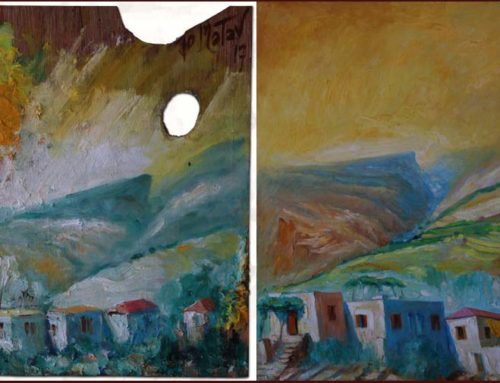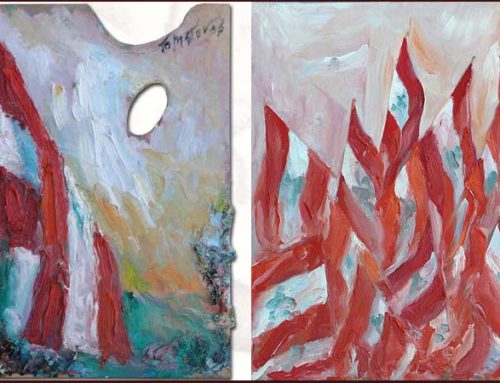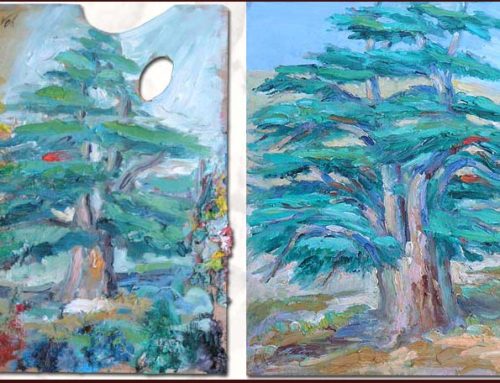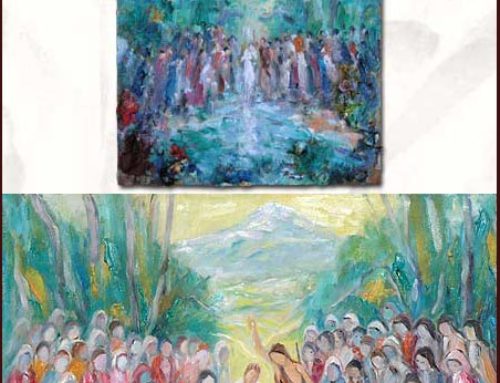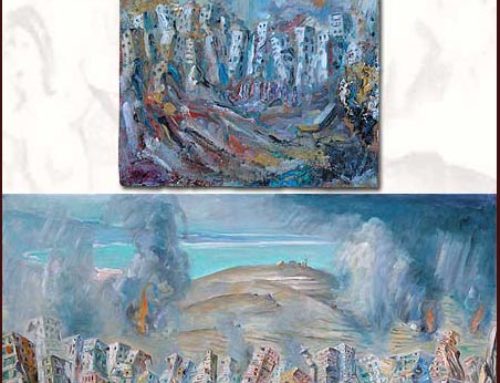“Give us this day, O Lord, our daily bread.”
The question of food was studied by the Ancient Greeks with a great deal of care. The Greek word diata, from which our word diet is derived, signified the way one led one’s life in the broadest sense.
Why do we eat? How should men be nourished? This is a vast subject much studied since early Antiquity. I need only mention the passage in the epic of Gilgamesh which bears witness to the baking of bread in a description making an allegory of bread out of the seven days of creation:
“Utnapishtim said to him, to him Gilgamesh:
Stand, stand and count, Gilgamesh, count your loaves of bread!
You must be told about the days when you were asleep.
Your loaf is dry, your first loaf,
The second has shriveled, the third is still moist,
The fourth is getting burnt. Your toasted bread,
The one which is golden brown is the fifth, and the baking of the sixth is already done.
The seventh is now at this moment of your awakening.”
Indications given by the Ancient Egyptians confirm that they were the first to use leaven, well before the Babylonians.
The production and use of bread was a key step in the evolution of civilization.
Cereals formed the mainstay of all food. According to a statistic produced in Berlin in the year1800, a family would devote 72% of its budget to feeding itself, of which 44% was for bread.
Leaven was not used in France and Paris until the 19th century, and then by a government decree which was at first only by way of a trial but which was crowned with success.
Many kinds of cereals can be used for making bread.
The Bible mentions several, among them the “four-dough bread” or four-grain bread, which even now is made in certain bakeries.
Rice is the mainstay in China and in much of Asia. Millet, the earliest grain known to have been used, was grown in China, Mongolia, Japan and Africa. Wheat was the cereal of the Mediterranean Basin. Oats was the cereal of Northern Europe, Germany, France and those countries that were both chilly and damp. Maize (U.S. corn or Indian corn) was the staple of the New World and particularly of Mexico.
Each territory produced its particular kind of corn, with its associated customs and history. To begin with, cereals were eaten boiled, then crushed and then finally ground. When they cooked loaves like buns, men had taken an important step forward in their evolution, that of producing the cereal of bread.
The kinds of wheat now cultivated are very different from the original wild form; repeated crossings have given highly superior qualities, and at present with the genetic manipulations, it is possible to produce a crop four hundred times sown seed or even more.
Wheat, sun-loving cereal, has dominated all other kinds. It is planted everywhere around the globe. The ear of the wheat rises as high as possible to absorb all the warmth and light of the sun, becoming impregnated with the golden color of the orb star of the morning. Not every kind of cereal has the character of the ear of wheat, open to the winds and full of riches. Its leaves, lance-like and slender draw down the solar glow. This particular cereal has reached perfection with the making of bread. There is no point here in mentioning the endless number of varieties, the different kinds of bread, the traditions, the recipes and the secrets. One may talk of French bread, Lebanese bread, Italian bread, and so on. Bread is a food born of the sun, full of the energy of its light.
As for wheat and bread, therefore dough, in symbols and proverbs, the examples are without number, ones such as The Harvest and the Harvesters, The Body of Christ Our Lord, our daily bread, earning one’s bread by the sweat of one’s brow, breaking bread together, etc..
The history of mankind and the history of bread are so intertwined that I can only wonder if there is anyone who has never tasted bread!
Joseph Matar
All rights reserved © LebanonArt
Translated from French: K.J.Mortimer



